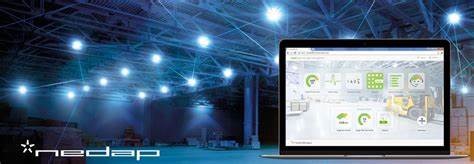Lighting Management
Lighting management refers to the control and optimization of lighting systems in a variety of environments, including homes, offices, commercial buildings, and public spaces. The primary objective of lighting management is to ensure adequate illumination while minimizing energy consumption, reducing costs, and enhancing user comfort and productivity. This can be achieved through the use of advanced technologies and intelligent systems that allow for flexible and efficient lighting control.
The key components and aspects of lighting management include:
Smart Lighting Systems: These systems use sensors, timers, and communication technologies to adjust lighting levels based on occupancy, ambient light, and user preferences. Smart lighting can be integrated with other building management systems for a more comprehensive approach to energy efficiency.
Lighting Control Strategies: There are various strategies employed to manage lighting effectively. These include dimming, scheduling, daylight harvesting (using natural light to reduce artificial lighting), and occupancy-based controls (turning lights on or off when people are present).
Energy Efficiency: Lighting management aims to reduce energy consumption and carbon footprint by using energy-efficient light sources such as LEDs (Light Emitting Diodes) and CFLs (Compact Fluorescent Lamps).
Lighting Automation: Automated systems can adjust lighting based on pre-set conditions or events, improving energy savings and convenience. For instance, lights can automatically turn off when a room is unoccupied for a specified duration.
User Interaction and Personalization: Modern lighting management solutions allow users to interact with the system through mobile apps or voice commands, enabling personalized control and an enhanced user experience.
Centralized Control and Monitoring: In commercial buildings, a centralized control system can manage lighting across different areas, providing real-time monitoring and reporting for energy management purposes.
Adaptive Lighting: Some systems can adapt lighting levels based on factors such as the time of day, user preferences, and the type of activity being performed in the space.
Maintenance and Diagnostics: Lighting management systems may include monitoring features that provide insights into the health of lighting fixtures, allowing proactive maintenance and troubleshooting.
Regulations and Standards: Lighting management solutions need to comply with relevant energy and safety standards set by local authorities and international organizations to ensure safe and sustainable operation.
Overall, lighting management is a crucial aspect of sustainable building design and operation, contributing to reduced energy consumption, lower costs, and improved occupant well-being. By leveraging modern technologies and intelligent controls, businesses and individuals can create well-lit spaces that are energy-efficient, environmentally friendly, and conducive to productivity and comfort.Lighting management refers to the control and optimization of lighting systems in various environments, such as homes, offices, commercial buildings, and public spaces. The primary objective of lighting management is to ensure adequate illumination while minimizing energy consumption, reducing costs, and enhancing user comfort and productivity. This can be achieved through the use of advanced technologies and intelligent systems that allow for flexible and efficient lighting control.
Key components and aspects of lighting management include:
Smart Lighting Systems: These systems utilize sensors, timers, and communication technologies to adjust lighting levels based on occupancy, ambient light, and user preferences. Smart lighting can be integrated with other building management systems for a holistic approach to energy efficiency.
Lighting Control Strategies: Various strategies are employed to manage lighting effectively. These include dimming, scheduling, daylight harvesting (using natural light to reduce artificial lighting), and occupancy-based controls (turning lights on or off when people are present).
Energy Efficiency: Lighting management focuses on reducing energy consumption and carbon footprint by implementing energy-efficient light sources such as LEDs (Light Emitting Diodes) and CFLs (Compact Fluorescent Lamps).
Lighting Automation: Automated systems can adjust lighting based on pre-set conditions or events, improving energy savings and convenience. For instance, lights can automatically turn off when a room is unoccupied for a specified duration.
User Interaction and Personalization: Modern lighting management solutions allow users to interact with the system through mobile apps or voice commands, enabling personalized control and enhanced user experience.
Centralized Control and Monitoring: In commercial buildings, a centralized control system can manage lighting across different areas, providing real-time monitoring and reporting for energy management purposes.
Adaptive Lighting: Some systems can adapt lighting levels based on factors such as the time of day, user preferences, and the type of activity being performed in the space.
Maintenance and Diagnostics: Lighting management systems may include monitoring features that provide insights into the health of lighting fixtures, allowing proactive maintenance and troubleshooting.
Regulations and Standards: Lighting management solutions need to comply with relevant energy and safety standards set by local authorities and international organizations to ensure safe and sustainable operation.
Overall, lighting management is a crucial aspect of sustainable building design and operation, contributing to reduced energy consumption, lower costs, and improved occupant well-being. By leveraging modern technologies and intelligent controls, businesses and individuals can create well-lit spaces that are energy-efficient, environmentally friendly, and conducive to productivity and comfort.



